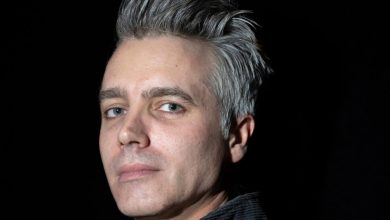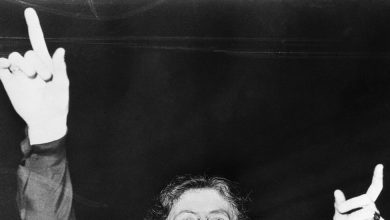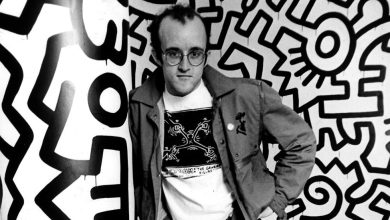What Is a Teddy Roosevelt Presidential Library Doing in North Dakota?

Here in Medora, a tiny town in the badlands of western North Dakota, Teddy Roosevelt is everywhere.
The cabin from his Maltese Cross Ranch sits at the gateway of the 70,447-acre Theodore Roosevelt National Park. Downtown, you’ll find the historic Rough Riders Hotel, pince-nez-wearing teddy bears in the gift shops and, in front of the Old Town Hall Theater, a bronze statue of the man himself.
And soon, visitors will also find something else: a presidential library.
The Theodore Roosevelt Presidential Library, set to open on July 4, 2026, will pay tribute to the 26th president’s “relentless, resilient spirit” and environmental vision. Perched dramatically on a butte, it aims to be “a people’s presidential library,” rooted not in books and archives — there are none — but immersive exhibits that challenge visitors to get, as Roosevelt famously put it, “in the arena.”
The $333 million project, which begins its national promotional campaign on Friday (Roosevelt’s birthday), has largely been flying below the radar outside the state. Mention it, and you tend to get a puzzled look and two questions: Doesn’t Roosevelt, who served from 1901 to 1909, already have a presidential library? (No.) And why the heck is this one being built in North Dakota?
That second question is one just about everyone in Medora (year-round population about 125) is ready to answer. It was here that Roosevelt came in 1883 to hunt buffalo. And it was here that he returned a year later to recover from a devastating depression brought on by the death, on the same day, of his wife and mother.
Roosevelt, who stayed nearly three years, found renewal and purpose in the area’s stark beauty. “I never would have been President if it had not been for my experiences in North Dakota,” he later wrote. It was here “that the romance of my life began.”
More than a century after his death, Roosevelt remains one of the most popular presidents, celebrated as a man of action, a muscular nationalist, an environmental visionary, a trustbuster or all of the above. He’s a favorite of Elizabeth Warren and Josh Hawley, Tom Brady and LeBron James. Historians consistently rank him among the top five.
But Roosevelt also saw life as a struggle between the weak and the strong, with whites at the top of the evolutionary heap. Which raises another, thornier question: How do you build an honest 21st-century museum about a figure whose 19th-century attitudes about race, empire and, especially, Native Americans still trail him like a cloud of dust?
‘Big Things’
“I like big things,” Roosevelt famously declared in 1886, in his first major public speech, delivered in Dickinson, N.D., 37 miles east of Medora. “Big parades, big forests and mountains, big wheat fields, railroads — and herds of cattle, too.”
And the library is definitely ambitious. Its 93,000 square-feet interior will include “narrative galleries” telling Roosevelt’s life story, flanked by immersive “experience galleries,” where visitors can test their mettle, for example, by charging up an ersatz Kettle Hill, where Roosevelt’s Rough Riders triumphed in the Spanish-American War. (Scannable “explorer bracelets” will track their progress toward various badges.) There will also be community spaces, a cafe and an auditorium that meets the requirements for hosting presidential debates.
But from the outside, the building, designed by the Norwegian firm Snohetta, will disappear into the landscape, half embedded in the earth. Visitors can walk across the arching green roof, or drink in the vastness of the surrounding badlands via a looping one-mile boardwalk.
Planners say it will be among the most sustainable cultural institutions in the world, meeting the goals of “zero energy, zero water, zero emissions and zero waste.” It will also be the only presidential library visitors can reach on horseback or mountain bike, via the 150-mile Maah Daah Hey Trail. (Yes, there will be a hitching post.)
“The library is the landscape,” Edward F. O’Keefe, the project’s chief executive, said on a visit to the site last month. It’s a mantra cited often here, along with the library’s core values: “dare greatly, think boldly, care deeply and live passionately.”
“When we began to think about this project, and honoring the legacy of Theodore Roosevelt,” O’Keefe said, “it began with the land.”
The library, a private nonprofit, is not part of the federal presidential library system run by the National Archives, which originated when Franklin D. Roosevelt built a home for his papers and donated it to the American people.
As with earlier presidents, T.R.’s papers are scattered across various institutions, with the largest holdings at the Library of Congress and Harvard. Those seeking communion with the man himself can visit his boyhood home in Manhattan and his estate on Long Island, both operated by the National Park Service.
Roosevelt considered himself both an Easterner and a Westerner, which has led to some lingering territorial envy and confusion. O’Keefe, with a chuckle, recounted a phone call with Senator Chuck Schumer, who was among the lawmakers who had to sign off on a provision in the 2021 federal omnibus spending bill allowing the library to purchase its 90-acre site from the U.S. Forest Service.
“He asked, ‘So where in New York are you building this library?’” O’Keefe recalled.
O’Keefe, a Grand Forks native who traces his family roots back to the days of the Dakota Territory, is a former producer at ABC News and CNN, where he won an Emmy for “Anthony Bourdain: Parts Unknown.”
He’s also an unapologetic “Tedhead,” with a knack for the colorful anecdote or telling historical detail. (The library’s 349-page “Story Guide” advises staff members to quote Roosevelt “often and liberally,” always citing their sources.)
Up on the butte, O’Keefe, whose book “The Loves of Theodore Roosevelt: The Women Who Created a President” comes out in May, led a group to a spectacular lookout, pointing out the spot in the valley where Roosevelt first disembarked by train. The future president’s initial impression wasn’t great. The scenery was barren, he complained in a letter, while the weather left him in “shivering misery.”
O’Keefe had a better time on one of his first hikes on the butte, after joining the project in late 2019. A horse appeared on a hillside, he recalled, just as snow began to gently fall. “It was just magical,” he said.
Craig Dykers, a co-founder of Snohetta and the library’s lead architect, first visited the town in May 2020, when three firms were vying for the job. In a telephone interview, Dykers recalled hiking through the badlands, listening to the wildlife and the wind in the grass.
In his New York office, he still has the impromptu sketch-model he made on the picnic table at his campsite: two unusually smooth round stones picked up near the Little Missouri River, topped with a leaf.
Snohetta has also designed major libraries in Calgary and in Alexandria, Egypt. “Libraries aren’t just about books and buildings,” Dykers said, “but also about places, and learning about those places directly.”
The ‘Teddy Triangle’
North Dakota’s presidential library push began 10 years ago, with a plan to build it at Dickinson State University. It was to be coordinated by the school’s Theodore Roosevelt Center, which was also creating a digital library, including scans of all known Roosevelt-related items.
In 2018, after funding cuts at the university, the project shifted to Medora, with a push from Gov. Doug Burgum, who has made the library a signature issue. In 2019, Burgum, a Republican software billionaire who is currently running for president, signed legislation committing $50 million from the state’s oil and gas revenues fund, provided library backers could raise $100 million by the end of 2020.
In October 2020, the library announced it had reached that benchmark. The $81,000 purchase of the Forest Service land, completed in 2022, was paid for by a group of Roosevelt descendants, three of whom are on the library’s board.
Last spring, some lawmakers raised objections after the legislature approved a $70 million line of credit from the state-owned Bank of North Dakota, with some questioning whether taxpayers would be left footing a chunk of the bill.
O’Keefe said the library had so far raised $233 million toward the $333 million target, including $50 million from the shale oil billionaire Harold G. Hamm.The credit line, he said, is just a “safety net,” to allow construction to start. “It has not been tapped,” he said.
Supporters hope the library will cement Medora, which already draws an estimated 250,000 tourists a year, as part of a “Teddy Triangle,” along with Mount Rushmore (about four hours to the south) and Yellowstone (seven hours to the southwest). But the town’s own pantheon of outsize characters could fill a mini-Rushmore.
It was founded in 1883 by the Marquis de Morès, a French adventurer who built a meatpacking plant near his ranch, with the idea of shipping meat directly east in refrigerated cars, bypassing Chicago. The business went bust a few years later, but the plant’s chimney and the marquis’ rustic “chateau” are still here.
Medora was reborn as a full-fledged tourist attraction in the 1960s, when the Bismarck businessman Harold Schafer began buying and restoring dilapidated buildings. Schafer was partial to sequined western wear and drove a pink Cadillac, a tribute to one of his signature products, Mr. Bubble. In 1965, he founded the Medora Musical, a cowboy revue, complete with cameos by horses and elk, that still draws sold-out crowds to the 2,800-seat Burning Hills Amphitheater each summer.
Today, not everyone in Medora relishes the prospect of more visitors. “A lot of people out here are generational ranchers,” Wes Obrigewitch, president of the Medora Grazing Association, said. “They really don’t want to see this area become another Bozeman or Missoula.”
Beth Clyde, the owner of the Cowboy Cafe, an old-fashioned eatery known for its Hot Beef sandwich, is among the skeptics, citing concerns about crowding, traffic and infrastructure.
“But I’m glad we’re getting the statue,” she said. “At least it will be safe here.”
“The statue” is the 10-foot bronze of Roosevelt on horseback, towering over a shirtless African man and Native American man walking on either side, that stood for decades in front of the American Museum of Natural History in New York, where its symbolism of white superiority had long attracted criticism (and periodic dousings with red paint).
The city approved its removal in June 2021. That November, the library announced that it would receive the statue on long-term loan, for “recontextualization.”
The surprise news set off an outcry among Native Americans, who make up roughly 5 percent of North Dakota’s population. Mark N. Fox, chair of the Mandan, Hidatsa and Arikara (or M.H.A.) Nation, called the relocation “ignorant and inappropriate.”
“I’ve got to be honest, I’m not a big fan of Theodore Roosevelt,” Fox told Native News Online. “He’s made some really disparaging comments about Native Americans.”
Scott Davis, a former executive director of the North Dakota Indian Affairs Commission, said he immediately texted Governor Burgum when he saw the news. “I was really upset,” he recalled in an interview last month in Medora. After a long conversation, Davis said, the governor raised the possibility of adding a “platform” for Native voices at the library.
Today, Davis, a member of the Standing Rock Sioux Tribe and a descendant of the Turtle Mountain Band of Chippewa, is a consultant for the library, where he helped organize a September 2022 event with tribal leaders, including Fox. There was a land blessing, a speech by the governor and a private meeting between tribal leaders and Roosevelt descendants, who buried tobacco together.
When the library opens in 2026, that burial spot will be marked, and Native American history and perspectives will be integrated into the exhibits. The library is also discussing ways to direct visitors to Native-run sites like the M.H.A. Nation’s new $30 million interpretive center in New Town.
The statue will not be on display when the library opens, O’Keefe said, and plans beyond that are uncertain. So why did the library take it in the first place? He acknowledged that the statue is “radioactive,” but said that the library had an obligation to confront “hard things.”
“If we’re committed to the idea of ‘humanize, don’t lionize,’ how could we shirk this difficult discussion?” O’Keefe said. “It didn’t feel resonant with Theodore Roosevelt.”
A ‘Sustainable Hero’?
A two-page spread in the library’s “Story Guide” lists “sensitive issues,” including Roosevelt’s support for eugenics, his militarism and his often “coarse and fearful” views of Native Americans.
“I don’t go so far as to think that the only good Indians are dead Indians,” he said in 1886, “but I believe nine out of every 10 are, and I shouldn’t like to inquire too closely into the case of the tenth.”
Today, Roosevelt’s preservation of roughly 230 million acres of public land may be the most popular part of his legacy. But it’s also a complicated one.
Roosevelt’s conservation policies, the guide acknowledges, “came at a great cost to Native Americans,” who lost access to homes, hunting grounds and spiritual sites.
Still, the historian Douglas Brinkley, a board member and the author of “The Wilderness Warrior: Theodore Roosevelt and the Crusade for America,” called Roosevelt “a sustainable hero” — imperfect, but possessing virtues and accomplishments that can be built on.
“We’d be a much lesser nation without the efforts of his presidency,” Brinkley said.
Kermit Roosevelt, a great-great-grandson of the president and a board member who teaches constitutional law at the University of Pennsylvania, said it was important to address his ancestor’s ugly attitudes toward Native Americans, as well his broader “atmospheric Social Darwinism.”
He’s glad the equestrian statue is no longer standing in New York. But whatever happens with it, he said, the library will offer a truer way to ponder Roosevelt’s legacy, warts and all.
“T.R. didn’t want statues,” he said. “He didn’t want himself on a horse, looking down on people.”



